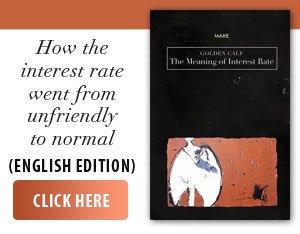We are faced with a series of decisions presented by Prime Minister Ilie Bolojan as necessary, but without the Executive having offered the general public a clear analysis of their economic effects. Beyond the image arguments, what is missing is exactly what should take precedence in a functional democracy: a serious assessment of the consequences of the new fiscal-budgetary measures on the population, companies and macroeconomic balances. In the absence of an impact study prepared by the Government with the adoption of the new tax measures, we try to clarify in this article what the effects of applying the new taxes on citizens and companies will be, in an effort to estimate based on official data, presented by the Ministry of Finance, the National Commission for Statistics and Forecasting (CNSP) and the Fiscal Council, and opinions of experts in taxation and economics.
The fiscal measures adopted by the Government by assuming responsibility before Parliament come at a time when Romania is pressured by dramatic budgetary realities, with a public deficit of 9.3% of GDP recorded last year and with the imminent risk of being downgraded to the status of an unsafe country for investment. Although these measures are intended to stabilize the state's finances and avoid a financing crisis, they bring with them a series of direct negative economic effects, in particular by reducing the income available to both the population and the business environment.
The exact estimate of the decrease in income of citizens and companies depends on many factors: the structure of consumption, each company's exposure to VAT, profit margins, activity sector, income level, etc. However, based on official documents, the Opinion of the Fiscal Council and the views of PwC Romania experts, who analyzed the impact of the new fiscal measures yesterday, we can build a reasonable estimate of the average impact, with the clear mention that this is a guideline approximation and not an exact projection.
• Impact on the population: reduction in purchasing power and reduction in consumption
The tax changes will significantly change the way Romanian citizens will organize their personal budgets in the coming years. The increase in VAT from 19% to 21% and the unification of the reduced rate to 11%, applicable to a much narrower spectrum of products and services, will mean chain price increases for the most banal purchases - food, utilities -, i.e. an increase in the price of most daily consumer goods and services. In parallel, increased excise duties on products such as alcohol, tobacco and fuels will fuel a price spiral that will affect all supply chains and will amplify the pressure on prices, affecting in particular social categories dependent on daily consumption. Moreover, the introduction of health contributions for pensions exceeding 3,000 lei will directly reduce the net incomes of citizens with medium and high pensions, while the new system of taxation of gambling winnings will reduce additional incomes for a part of the population.
In addition, there is also a reduction in the income of public sector employees by drastically reducing the bonuses they receive, a reduction combined with a freeze on social and personnel expenses in 2026, and with a reduction in allowances for sick leave whose term does not exceed 15 days. In addition, the modification of the rovinieta, environmental taxes and property tax will bring new pressures on family budgets. The result will be a sharp compression of consumption, with chain effects on the entire economy. Basically, the new fiscal measures will generate a significant decrease in purchasing power for citizens.
This was recently confirmed to us by the expert in economics, university professor Dr. Mircea Coşea who states: Mircea Coşea stated: "We must see that the most important thing is not that of increasing prices, but of decreasing incomes at an accelerated, brutal, immediate pace. This will cause us to have a radical change in consumer behavior, in the population's consumption. People will change their priorities. They will allocate more money for food, although we may have smaller quantities and lower qualities, and they will no longer allocate money for other expenses that until now classified us among European countries, namely expenses for personality development - for culture, for education, for health, for travel -, that is, everything that means developing the human personality in the spirit of European values. These expenses will disappear and we will reduce expenses only for food, clothing, shoes and, possibly, aspirin. We are already in crisis, and everything that is being done will not solve the crisis, but will accentuate it”.
Tax consultant Gabriel Biriş expressed a similar opinion, recently telling us: "The new tax measures it will have an impact on everyone, whether we are talking about companies that borrow from banks, whether we are talking about ordinary citizens who will buy goods and services with higher VAT, or whether we are talking about companies and individuals who pay increased excise taxes on fuel. All tax increases will be reflected in prices”.
Based on all the data from the fiscal package assumed by the Bologna government in Parliament, combined with the data from the Fiscal Council Opinion and the information presented yesterday by PwC Romania experts, it appears that the new measures may lead to a decrease in purchasing power of between 5% and 8% for most citizens. In the case of vulnerable households, where a higher proportion of income is directed towards basic consumption, the loss of purchasing power could exceed 10%. Even pensioners with above-average incomes will face a net decrease of approximately 2% to 5% in purchasing power, depending on the amount of the pension and its form of payment.
• Impact on companies: higher costs and reduced turnover
For the business environment in our country, the new tax rules will mean an additional effort to adapt and, in many cases, a decrease in income and profitability. Companies will feel these changes not only in balance sheets, but also in operational processes. Higher VAT automatically means lower consumption and, implicitly, lower sales. The adjustments require urgent reconfiguration of accounting and logistics systems, with significant costs and risk of non-compliance. Companies must prepare for a period of intense audits and tax inspections, amid legislative ambiguities.
Adina Vizoli, Partner at PwC Romania, said yesterday in a debate organized on the impact of the new tax measures: "In the VAT area, we have substantial changes, a re-establishment of VAT rates. We have operations that are now subject to a 9% rate and that will move to a 21% rate starting August 1, 2025. First of all, we need to look at the technical changes made to the reduced VAT rates, namely that medicines will have 11% VAT, but this is only about medicines intended for humans. Those for veterinary use will have a 21% VAT rate. Then, food supplements enter, from August 1, 2025 at a rate of 21%. In the food sector, food intended for human consumption is subject to a rate of 11%, a VAT rate that also applies to live animals and birds used for food preparation. However, seeds, plants and ingredients used for food preparation will have a VAT rate of 21%. In these conditions, we wonder whether for companies the reduced rate will be conditioned by the quality of the food or ingredients contained in the food product. What will producers in the agri-food industry do if they have purchased ingredients with a VAT of 21%, but deliver food for which the 11% rate is paid? I believe that it will lead to VAT refunds and checks by ANAF. The application of the reduced VAT rate in this agri-food sector may be difficult or lead to disruptions in the supply chain, because economic operators will not be sure of the VAT rate they must apply: 11% or 21%.
The tax expert specified that another impact will be for companies that have an automated cost system and mentioned that each economic agent must remap the products in the portfolio, so as to source at the correct VAT rates applicable to this chain.
Adina Vizoli said: "We hope to have clarifications by August 1, 2025, because in their absence it will be difficult to determine the correct VAT rate. Then, companies need to make adjustments in their systems and cash registers and pay increased attention to ongoing transactions in order to correctly determine which VAT rate is applicable. For ongoing transactions, we must look at the date of the operation because this determines the applicable VAT rate. We must be careful with services, utilities, subscriptions, pre-paid tourist packages, where we will be in a position to apply the new rates, but also to maintain the previously applied VAT rate. In the case of reducing or regularizing price differences, for example - in the case of a volume discount received or granted for transactions in 2025, companies must take into account that they will be reporting on the VAT rate applicable to the initial transaction and will not rely on automatic tax codes”.
• The increase in dividend tax may attract the reuse of conventions to avoid double taxation
Another effect on companies will be the increase in dividend tax, which increases from 10% to 16% starting with January 1, 2026, which will affect financial planning, investment attractiveness of companies, as well as the shareholder reward strategy. Ionuţ Simion, Partner PwC Romania, argued in the yesterday's debate: "The increase in the dividend tax to 16% will only apply to dividends distributed and paid after January 1, 2026, with the exception of income that was declared at the end of 2025 and that is to be paid later, but the payment obligation is set at the maximum deadline of January 25, 2026. For dividends distributed and paid in 2025, the tax rate will be 10%, including interim dividends, with the adjustment to be made in the 2026 reporting. There is also an aspect regarding Romanian companies that hold less than 10% of shares for more than one year, where the tax is 16%, while companies that hold more than 10% of shares for more than one year have zero tax. I believe that in this case the double taxation avoidance agreements will start to be attractive again, because the rates in the agreement are lower than 16%, being a maximum of 10%.
Related to the dividend tax increase, Alin Brendea, a stock market analyst at Prime Transaction, recently stated for the BURSA newspaper that in his opinion, once the measure is implemented, a trend towards smaller dividend distributions is likely to emerge, with shareholders opting for more tax-advantaged methods of using the company's profits. "Dividends could be replaced by the granting of free shares or share buybacks in order to cancel them", said Alin Brendea.
Dragoş Mesaroş, trading director of the financial brokerage company Goldring, told us on the same occasion that "the dividend tax increase will not affect long-term investors too much".
Another problem will be for companies/funds that manage private pensions from Pillar II and Pillar III. They will be required, according to PwC Romania experts, to withhold and transfer the health contribution for pensions in payment exceeding 3,000 lei, which will add an additional tax compliance burden.
Tax expert Ruxandra Târlescu, Partner at PwC Romania, also spoke about reducing the value of sick leave, a measure that would reduce companies' expenses in this area. Ruxandra Târlescu stated: "The rules are changing here, because for medical leaves of up to 15 days, the allowance is reduced. For medical leaves of up to 7 days, a 55% allowance will be paid, while for medical leaves of between 8 and 14 days inclusive, the allowance will be 65%, compared to 75% as it was until now in both cases. But let's not forget that the first five days of the medical leave are borne by the employer. The decrease in this allowance will cause a decrease at the company level regarding medical leave expenses”.
The first estimates of tax and economic experts indicate an average decrease in company revenues of between 4% and 7% percent in 2025 alone. In sectors such as HoReCa, retail or construction, the impact could be even greater, given that these areas are sensitive to price increases, an increase that can drastically affect the level of domestic demand.
• Impact on the banking sector: increasing effective tax rates will lead to a decrease or cancellation of profits
The banking system is undoubtedly one of the sectors most affected by this new tax regime. Credit institutions with a market share of more than 0.2% will be subject to an additional tax of 4% applied to turnover, which, in some cases, will lead to an effective tax rate of over 100%, especially for banks with low profits in relation to their business volume.
Diana Coroaba, Partner at PwC Romania, stated: "Banks will owe an additional tax of 4% on turnover for the period July 1, 2025-December 31, 2025, and in 2026 they will only have an additional tax of 4%. There is an exception in the tax package from this additional tax, for banks that have a market share of less than 0.2% in 2024 and that will pay only 2%. At this moment, of the 32 commercial banks in Romania, only 10 or 11 would qualify for the 2% tax, because each one has a market share of less than 0.2%; we are talking about niche banks or bank branches with limited activity in Romania. The rest of the banks, approximately 22, will move to the increased tax rate, i.e. 4% on turnover. The impact on the banking system will be significant with regard to the profitability of the banks. The effective tax rate for the 22 banks that each holding over 0.2% of the market will increase in 2025 to 29% compared to 23% in 2024, and in 2026 to 34%. However, the two increases represent the average of the system, because if we look at the tax burden, it is not evenly distributed among the banks because it is not about taxing profit but turnover. So, with regard to these 22 banks, the effective tax rate varies between 24% and 61% in the second semester of 2025, and in 2026 it will be between 27% and 87%, with the mention that there will even be cases in which the effective tax rate will be over 100% - for example in the case of banks that record an accounting loss or that have very low profits in absolute terms compared to turnover".
He also showed that this overtaxation comes in addition to the profit tax, directly affecting the ability of banks to finance the economy. In addition, the measure is not recognized as a "cover tax" for Pillar II, which opens the way to possible double taxation.
Therefore, the profitability of the banking sector is estimated to decrease by up to 40%, and small or specialized banks risk becoming unprofitable. In addition to the drastic reduction in bank profitability, we may also face possible collateral effects on lending, such as increased financing costs for the population and companies - affecting in a chain all economic sectors dependent on capital, and even on the stability of the financial system.
This was recently reported for the BURSA newspaper by economic expert Mircea Coşea who stated that "taxing 4% of banks' turnover will lead to an increase in interest rates and a reduction in lending granted by the banking system” and by tax consultant Gabriel Biriş who drew attention to the situation "in which non-performing loans increase, banks enter into losses and have to pay tax on turnover”. Regarding this 4% tax on banks' turnover, Dragoş Mesaroş, trading director of the financial brokerage company Goldring, recently told us that in the end it will be borne by the banking system's clients, i.e. individuals and companies. "I think banks could increase loan interest rates and fees to cover this tax," said Mr. Mesaroş.
• Impact on GDP: the new measures will slow economic growth
Beyond the one-off effects, the entire fiscal package has the potential to slow economic growth. Official estimates (CNSP) speak of a real growth of only 1.4% in 2025 - a figure below Romania's potential and insufficient to support a sustainable budgetary consolidation and of 2.4% in 2026, but these figures do not yet fully reflect the effects that the measures included in the second and third packages of measures announced by Prime Minister Ilie Bolojan will have.
It is certain that, with the implementation of the new taxes and fees, domestic consumption, one of the traditional engines of the economy, will be seriously affected by the decrease in population incomes, which will also lead to a decrease in citizens' purchasing power. Investments - both public and private - will stagnate or slow down, amid uncertainty and reduced fiscal attractiveness.
Regarding this aspect, tax consultant Gabriel Biriş also told us: "It is obvious that all tax increases will inhibit economic growth and we will probably even register a decrease, but in this case we are talking about a soft-landing, a controlled landing. If we had a downgrade, we would have had a disaster.”
However, despite this slowdown, nominal GDP will continue to grow due to inflation and the high deflator, which will contribute to reducing the deficit expressed as a percentage of GDP and achieving the fiscal targets assumed within the PNRR and European commitments.
Regarding these aspects, the Fiscal Council states in the Opinion published yesterday on the new fiscal package: "Budgetary correction, which means reducing internal absorption (affecting personal income, corporate revenues), is the price we must pay to ensure the sustainability of public debt and avoid a more severe adjustment. The new fiscal measures indicate a budgetary impact of 0.6% of GDP in 2025 and 3.35% of GDP in 2026, creating premises for reducing the budget deficit below 8% of GDP in 2025, respectively, for respecting the budget deficit target in 2026. For 2025, reducing/prioritizing some public investment expenditures (which would be provided for in the following packages of measures) would bring the budget deficit to around 7.5% of GDP. The budget deficit correction measures must be included in the budget rectification project and substantiate the new trajectory of the budget deficit.”
The Fiscal Council also shows that during this time our country's capacity to absorb European funds remains limited. With an absorption rate of only 5.2% in mid-2025 for structural funds and only 27% of the PNRR milestones met, our country risks losing significant amounts that could offset the negative effects of fiscal austerity. In the absence of these funds and real reforms, the budgetary correction would turn into a reduction in the incomes of citizens and companies, with major social and economic costs.
























































